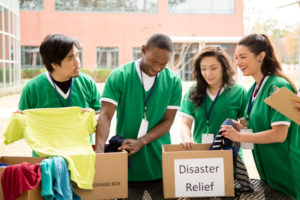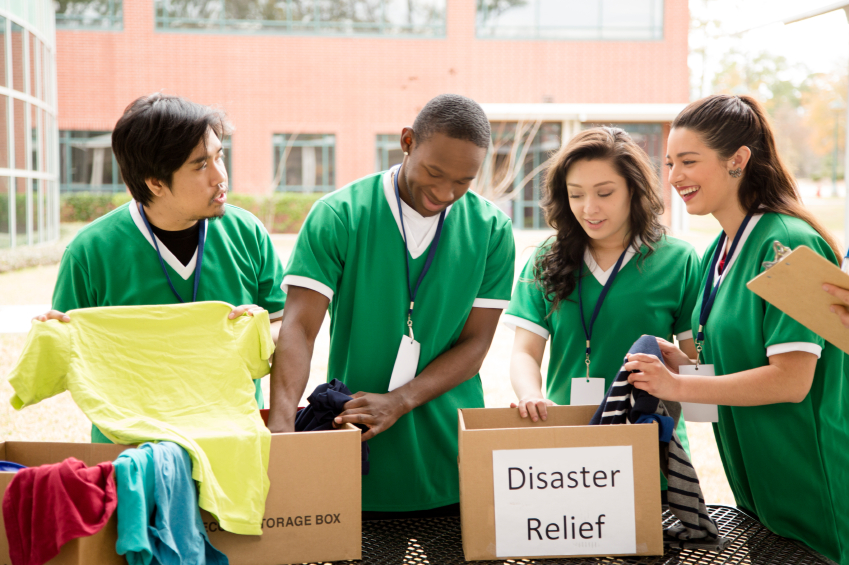

Last week, my son’s class wrote their first persuasive speech. They identified a problem within their school, chose a specific audience, and using facts and research, attempted to persuade their school janitor to join them during recess every Friday to share his obstacle-course building skills with students. This was a small-scale service learning project, but it resulted in a lasting understanding of the content and tools they used in the process.
Transferring classroom knowledge to the real world
One of the great challenges for educators is ensuring that the skills students learn in the classroom are carried out into the world. Key to ensuring knowledge retention is the concept of transfer — that students understand there are practical applications for what they are doing. Rather than relying on students to create context for transfer, teachers can help students engage with real-world problem-solving through service learning projects.
Service learning defined
Service learning is a process that connects student learning to civic and social responsibilities. Service learning projects require a high level of engagement and leadership and should include research and reflection. They allow students to create meaningful change outside the classroom. Above all else, service learning creates a fun environment in which students actively engage these skills without the perception that they are completing busywork.
Service learning projects can take on many forms. My son’s class passionately argued for their janitor to expand his social role in the school in a way that benefited both his inclusion and student health. In their service learning brochure, the Environmental Protection Agency outlines projects ranging from the collection of old shoes to the creation of neighborhood recycling programs. The National Coalition for Academic Service Learning and the Generator School Network have a variety of service learning ideas as well.
Helping students bring their passion and knowledge to the table
Some teachers encourage their students to identify local problems that require solutions and develop written and researched proposals, which are then presented and voted on. Students bring their own passion and knowledge to the table as they create these projects, and enjoy the process of presenting their problem and justifying their solutions.
Even when their projects don’t get the most votes, they are happy to have learned more about their individual passions and to put their energy into another project. Other teachers pose a problem to the class as a whole and then challenge the class to brainstorm and research solutions, working organically to come up with a service learning project that the entire class can enjoy.
Ownership of problem-solving: Service learning should be student-led
However service learning projects are developed, it is essential that students are allowed to take the lead. They should be involved in the creation both of solutions and curriculum design. When challenged with uniting curriculum with their service learning projects, students’ passions will drive them to see the interconnectedness of what they learn in class and what they do in the community.
When educator Melissa Kandido engaged her class in a service learning project to collect books for a library in Namibia, she posed the problem but left her students to find a solution. As a result, students created a book collection and then learned to navigate the complex issues that came with shipping a large number of items overseas.
Along the way, they learned how to create persuasive appeals for book collections, how to meet directly with shipping providers to request overseas shipping, and followed the complex shipping journey as their books sought their destination. Additionally, her class reflected on their experience, discussing both what they learned and how they felt.
Reflection allows students to align community service with learning standards
This act of reflection is perhaps the most important aspect of service learning and a great opportunity to align community engagement with learning standards and educational expectations. Asking students to reflect on what their service means to them and then unite their experience with what they learn in school helps solidify skill transfer and clarify the usefulness of classroom skills. Whether they have done individual, group, or class-wide projects, students should be able to reflect on their academic, personal, and social growth as well as any connections they have made to their future career path or general civic responsibility and involvement.
Students who have done the math, digging, and laid the bricks in a path in front of their school will feel a certain amount of both pride and responsibility for that path. Additionally, they will understand the importance of calculating area in a way that a math lesson can’t provide. Most importantly, though, they will understand that the knowledge they gain in the classroom can change the world.
Monica Fuglei is a graduate of the University of Nebraska in Omaha and a current faculty member of Arapahoe Community College in Colorado, where she teaches composition and creative writing.
Categorized as: Tips for Teachers and Classroom Resources
Tagged as: Engaging Activities, History and Social Studies
